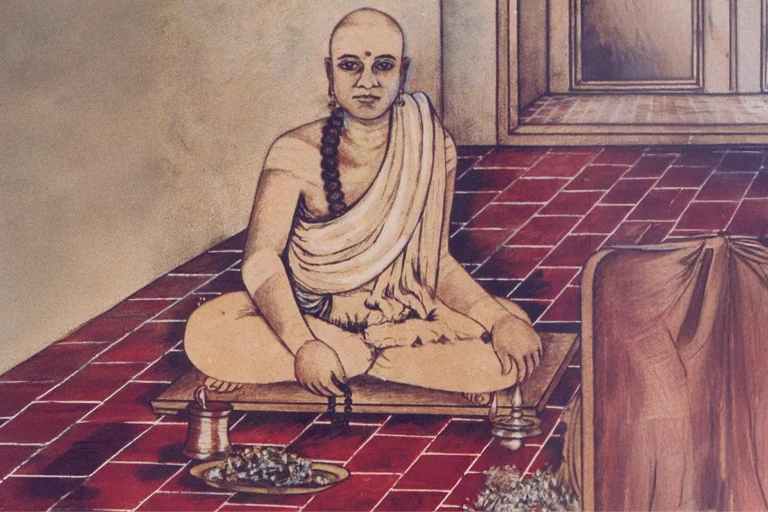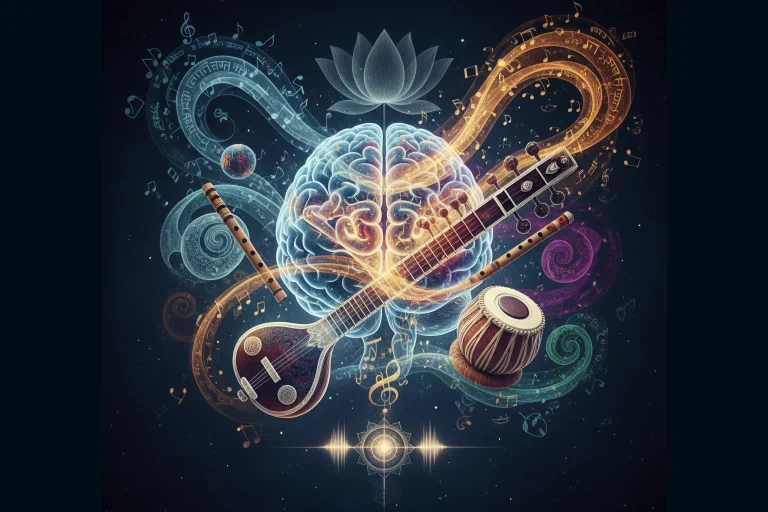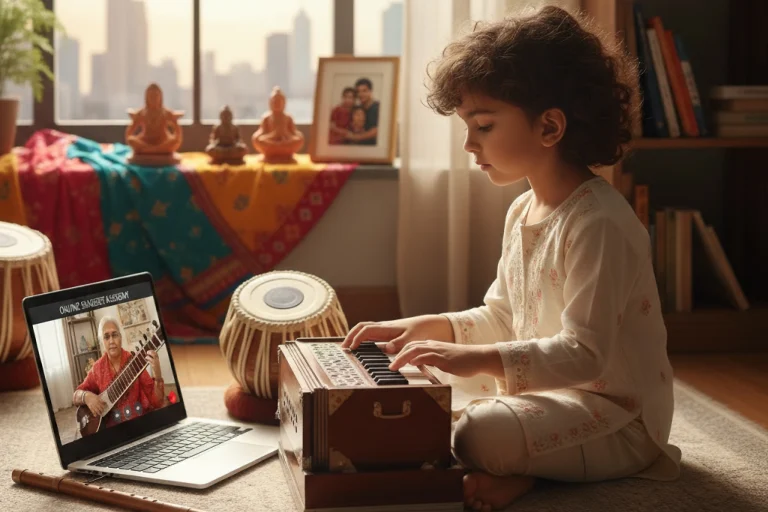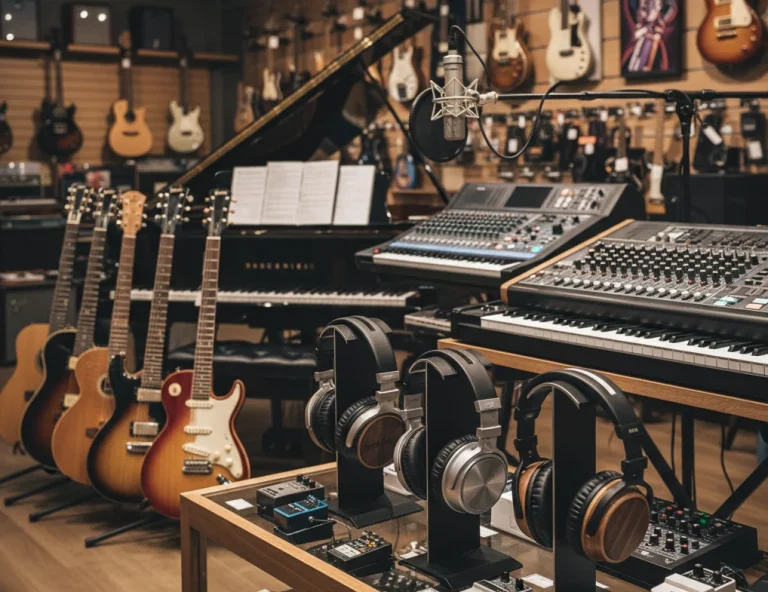All Topics
- Alchemizing Music Concepts for Students
- Artist Spotlight
- artium gift card
- Artium Maestros
- Artium News
- buying guide
- Carnatic Music
- Devotional Music
- Editorials by Ananth Vaidyanathan
- Film Music
- Guitar
- Hindustani Classical Music
- Indian Classical Music
- Indian Folk Music
- Insights
- Instruments
- Karaoke Singing
- Keyboard
- Kids Music
- maestros
- Music Education
- Music for Kids
- Music Industry
- Music Instruments
- Music Legends
- Music Theory
- Music Therapy
- Piano
- piano guide
- Success Stories
- Tamil Film Music
- Telugu Film Music
- Time Theory
- Tools
- Uncategorized
- Vocal Singing
- Vocals
- western classical music
- western music
- Western vocal music
Indian Classical Music, Instruments, Music Instruments
What is the role of a “Mridangam” in Carnatic music, and how does it differ from the “Tabla” used in Hindustani music?
What is the role of a “Mridangam” in Carnatic music, and how does it differ from the “Tabla” used in Hindustani music?
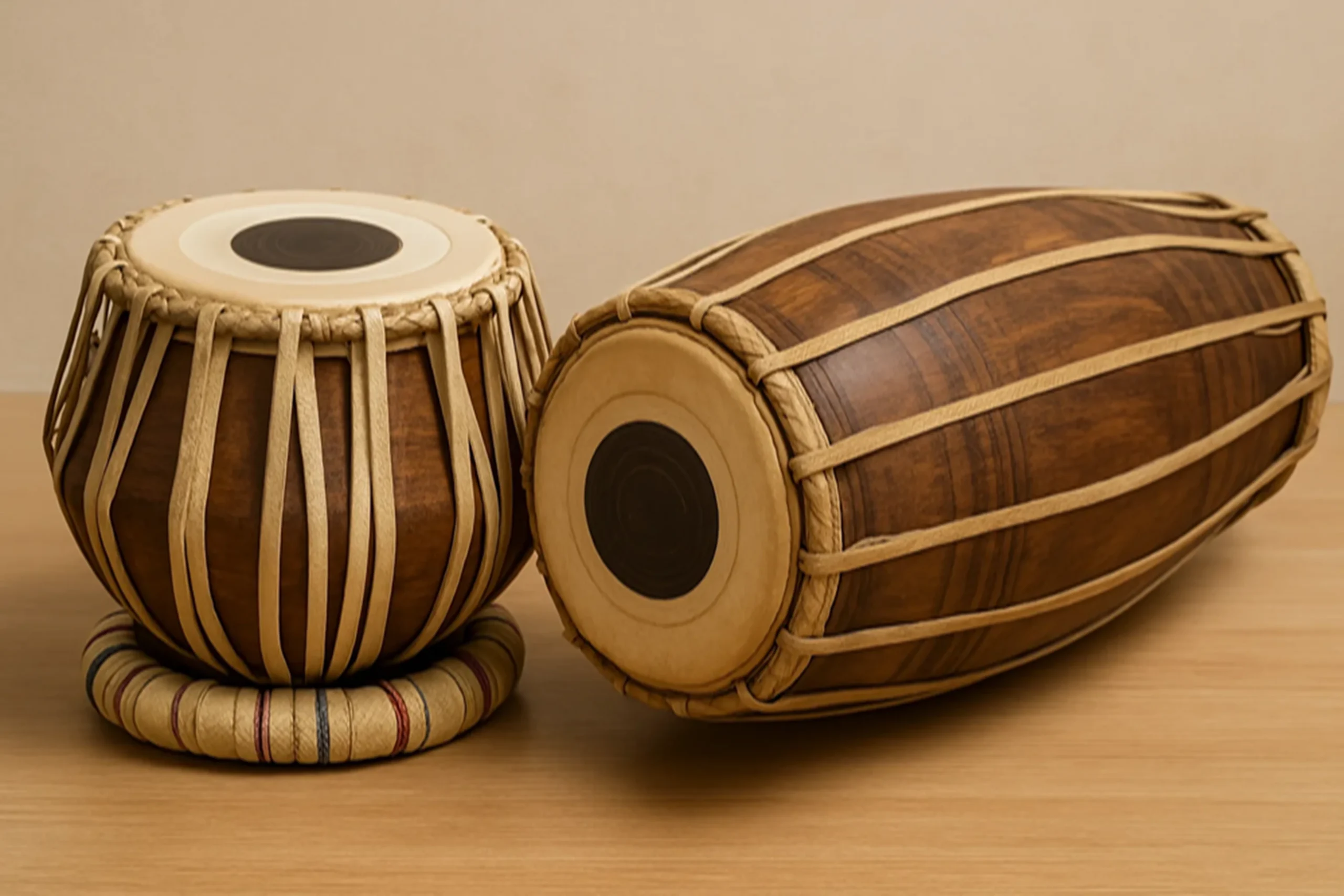
Table of Contents
The Significance of Percussion in Indian Classical Music
Indian classical music is a treasure trove of intricate melodies, soul-stirring raags, and rhythmic complexities that have evolved over centuries. One of the core elements that breathe life into this art form is percussion. In the rich tapestry of Indian classical music, two prominent percussion instruments, the Mridangam and the Tabla, play distinct roles in Carnatic and Hindustani music, respectively. Today, we will explore the heartbeats of these two musical traditions and understand the nuances that set them apart.
But before that…
If you’re really excited to start your journey in music, start with a free trial lesson today!
Introducing the Mridangam and Tabla
In the world of Indian classical music, the Mridangam and Tabla are like musical gems, adding the magic of rhythm to our tunes. The Mridangam is all about the soulful beats of Carnatic music from the South, while the Tabla brings the lively rhythms of Hindustani music from the North. Let’s take a joyful journey to discover how these two instruments shape the heart and soul of our musical traditions.
Origins and Evolution of the Mridangam
The Mridangam, often hailed as the soul of Carnatic music, has a history that dates back over two thousand years. It originated in South India and has been an integral part of the Carnatic musical tradition ever since. This double-headed drum is crafted from a hollowed-out block of wood, with drum heads made from layers of animal skin, typically goat or buffalo. The drumheads are skillfully laced together with leather straps, allowing for fine-tuning and tonal control.
A Deep Dive into the Tabla
The Tabla, on the other hand, is a central component of Hindustani music, which primarily thrives in North India. It boasts a relatively more recent history, emerging around the 18th century. Tabla consists of two drums: the smaller drum, called the “Tabla,” and the larger one, known as the “Bayan.” These drums are constructed using materials like clay, wood, and metal, covered with layers of animal skin. What makes the Tabla truly unique is its upright structure enabling it to produce sounds effortlessly.
Mridangam: The Soul of Carnatic Music
The Mridangam is the heart and soul of Carnatic music. With its ancient roots in South India, this unique double-headed drum has been serenading our melodies for over two millennia. The Mridangam player creates intricate rhythmic patterns, adding depth and sweetness to our Carnatic compositions. Its warm tones and masterful beats infuse life into our musical traditions, making it an indispensable part of our heritage.
Role of Mridangam in Carnatic Compositions
In Carnatic music, the Mridangam is often referred to as “Nadha Sudha Rasa,” translating to “the essence of musical sweetness.” Its role is to provide rhythmic support to vocal and instrumental performances. The Mridangam player, known as a “Mridangist,” accompanies the lead artist by creating intricate rhythmic patterns that enhance the melodic experience.
Mridangists use their fingers and palms to strike different parts of the drumheads, producing a rich palette of tones and textures. These patterns, known as “Korvais” and “Nadai,” add depth and complexity to the composition. The Mridangam Carnatic is also responsible for maintaining the “Tala” or rhythmic cycle, ensuring that the performance stays in perfect harmony.
Mridangam Techniques and Styles
Carnatic music features a variety of rhythmic cycles, known as “Talas,” with the most common being the “Adi Tala” and “Rupaka Tala.” Mridangists master these Talas along with numerous other complex time signatures. Their dexterity and creativity shine through improvisational techniques, making each performance a unique and mesmerising experience.
Prominent Mridangam players like Palghat Mani Iyer, Umayalpuram K. Sivaraman, and Guruvayur Dorai have not only mastered the art but have also pushed the boundaries of the instrument with their virtuosity.
Tabla: The Rhythm of Hindustani Music
In the world of Hindustani music, the Tabla reigns supreme as the rhythmic maestro. With its origins in North India, this captivating Tabla percussion instrument has been accompanying our vocalists and instrumentalists and dance for centuries. Tabla players, or “Tablachis,” weave mesmerising tabla rhythm, enhancing the magic of Hindustani Ragas. Its ability to mimic the nuances of melodies, from resonant bass notes to sharp, piercing tones, makes the Tabla the heartbeat of our musical heritage.
Tabla’s Role in Hindustani Ragas
In Hindustani music, the Tabla plays a crucial role in accompanying the vocalists and instrumentalists and Kathak performances. It serves as the primary rhythmic backbone, aiding the artist in maintaining the integrity of the chosen Raga (melodic framework). Unlike Carnatic music, where compositions are set and pre-defined, Hindustani music thrives on improvisation, and the Tabla player must be adept at following the artist’s lead in real-time.
The Hindustani Tabla produces a mesmerising array of sounds, from resonant bass notes to sharp, piercing tones. This versatility allows Tablachis to mimic the subtle nuances of vocal and instrumental melodies. It will be an enriching experience for you to learn tabla online as well. You can even take tabla lessons for beginners without any hesitation at Artium Academy.
Tabla Playing Techniques and Bols
Rhythmic patterns played on the tabla are called bols. These Bols are either individual strokes or combinations of strokes, such as “Dha,” “Dhin,” “Tin,” and “Na,” each having its distinct sound and significance. The Tabla player’s mastery lies in seamlessly weaving these Bols into intricate rhythmic compositions, known as “Tukdas” and “Relas,” while maintaining perfect synchronisation with the lead artist.
Prominent Tabla maestros like Ustad Allarakha Khan, Ustad Zakir Hussain and Pandit Anindo Chatterjee have not only set benchmarks for technical prowess but have also explored innovative fusions, expanding the Tabla’s horizons.
Comparing Mridangam and Tabla
The Mridangam’s warm tones and intricate rhythms contrast with the Tabla’s sharp, versatile beats, showcasing the diverse rhythmic flavours of Indian music.
Differences in Construction and Materials
One of the most apparent distinctions between the Mridangam and Tabla lies in their construction and materials. The Mridangam, with its wooden shell and layered leather drumheads, has a warm and resonant tone. In contrast, the Tabla, with its clay/wood and metal construction, produces sharper and brighter tones.
Rhythmic Patterns and Talas
Another notable difference is in the Vocabulary. Carnatic music features a wide variety of Talas, including the complex “Misra Chapu” and “Khanda Chapu,” each with its unique structure. In contrast, Hindustani music primarily relies on the “Tala” system, which is more flexible and allows for greater improvisation.
Mridangam and Tabla in Fusion Music
These timeless percussion instruments transcend boundaries, fusing classical roots with modern sounds, creating captivating musical blends that resonate across genres.
Cross-Cultural Collaborations and Experiments
The beauty of Indian classical music lies in its adaptability and openness to fusion with other musical genres. The Mridangam and Tabla have ventured far beyond their classical roots, collaborating with artists from diverse backgrounds.
These instruments have found their place in contemporary music, contributing to genres like world music, jazz, and even electronic music. Musicians like Trilok Gurtu and Talvin Singh have pioneered cross-cultural experiments, blending the rich traditions of the Mridangam and Tabla with modern sounds.
Notable Indian Artists and Performances
Legendary Mridangam Maestros – India
1. Palghat Mani Iyer: Renowned for his virtuosity and innovations in Mridangam playing, he remains an icon in the world of Carnatic music.
2. Umayalpuram K. Sivaraman: A stalwart of Carnatic percussion, his mastery of complex Talas and rhythmic intricacies is unparalleled.
3. Guruvayur Dorai: Known for his impeccable technique and expressiveness, he has left an indelible mark on the Mridangam tradition.
4. Karaikudi Mani: A virtuoso Mridangam maestro, he is hailed for his flawless technique and innovative rhythmic explorations in Carnatic music.
5. Thetakudi Harihara Vinayakram: A pioneering Mridangam artist, he is revered for his trailblazing contributions to the art of percussion. He is also known as the God of ghatam, a percussion instrument used in various repertoires across India, especially in Southern India.
Celebrated Tabla Virtuosos – India
1. Zakir Hussain: A living legend in the world of Tabla, his mesmerising performances have earned him global acclaim.
2. Ustad Allarakha Khan: A virtuoso Tabla player known for his impeccable sense of rhythm and collaboration with renowned artists.
3. Anindo Chatterjee: Renowned for his deep understanding of Hindustani rhythms and innovative compositions.
4. Aneesh Pradhan: Our Faculty head for the Tabla course and an accomplished Tabla maestro and musicologist, he has earned acclaim for his mastery of rhythm and deep understanding of classical music traditions.
5. Swapan Chaudhari: A renowned Indian Tabla player, Pandit Swapan Chaudhuri is known as an acclaimed soloist and is well known for his accompaniment to several great musicians of Indian classical music. He learned tabla under the tutelage of his Guru Santosh Biswas (Lucknow Gharana).
The Role of Mridangam and Tabla in Contemporary Music
In addition to their contributions to fusion music, the Mridangam and Tabla have also made their presence felt in Indian film music. Composers often incorporate these instruments, especially the percussion instruments Tabla, to infuse classical authenticity into film soundtracks, bridging the gap between classical and popular music.
Educational Initiatives and Cultural Significance
The propagation of these ancient percussion traditions are of paramount importance. In India, various music academies and institutions offer comprehensive courses in Mridangam and Tabla, ensuring that the legacy continues to thrive. These educational initiatives not only groom future artists but also contribute to the cultural heritage of the nation.
Final Thoughts on Mridangam and Tabla
In conclusion, the Mridangam and Tabla, though distinct in their origins and roles, are two sides of the same rhythmic coin that enrich Indian classical music. They embody the heartbeats of Carnatic and Hindustani music, respectively, and have transcended boundaries to make their mark in the world of music. As we celebrate these instruments and the artists who wield them, we also acknowledge their enduring legacy and the promise they hold for future generations of music enthusiasts.
Learning Tabla or Mridangam is a beautiful experience. If you wish to begin your music learning journey with Tabla, we’d love to give you the first step in this direction to take tabla lessons. Start with our FREE 1:1 Tabla learning session at Artium Academy.

